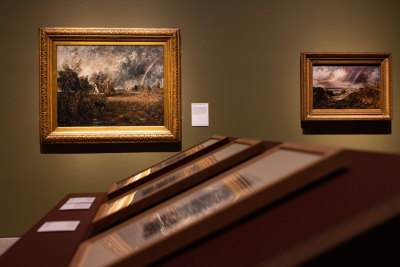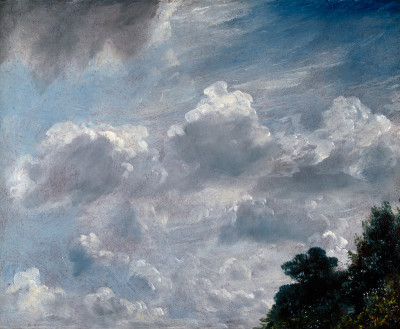Artist of the month: May 2015
Artist of the month: May 2015
Sir Frederic Lord Leighton PRA
By The RA Collections Team
Published 1 May 2015
From a Continental training, Lord Leighton had a mixed reception in Britain, but went on to be President of the RA.
-
Frederic Leighton was born in Yorkshire, but from the 1840s onwards his family lived mostly abroad. The majority of his youth was spent travelling around Germany and Italy. He was given art lessons from an early age and soon enrolled at various art academies, including the Academy of Art Berlin, Accademia di Belle Arti Florence and the Städelsches Kunstinstitut in Frankfurt, where he trained under the Nazarene follower Edward von Steinle.
This Continental artistic upbringing would have great implications for his reception within the English art establishment. In 1855 Leighton decided to exhibit at the Royal Academy for the first time, sending a work he had completed while renting a studio in Rome: Cimabue’s Madonna Carried in Procession through the Streets of Florence (National Gallery London, on loan from Her Majesty the Queen). The subject illustrates a passage from Giorgio Vasari’s Lives of the Artists, describing the celebratory procession of the early Italian Renaissance painter Cimabue’s Rucellai Madonna being carried through the streets of Florence to the church of Santa Maria Novella. The painting was a huge critical and public success for Leighton, not least because it was purchased immediately by Queen Victoria and received great praise at the 1855 Summer Exhibition. Many saw the work as heralding a change in British art for the better, against the anti-establishment Pre-Raphaelite circle. In a letter to a friend, Dante Gabriel Rossetti described the impact of Leighton’s debut appearance on the English art scene, writing “the RA’s have been gasping for years for someone to back against Hunt and Millais, and here they have him…”.
However, despite the success of Cimabue’s Madonna, Leighton suffered hostility during the late 1850s and early 1860s from the London art critics and RA hanging committee, with his works being consistently rejected or poorly hung. His foreign training and perceived ‘Continental’ style were met with suspicion and seen as alien. During this period he closely identified with independent artists outside of the Academy; despite his open opposition to the Pre-Raphaelite style of detailed realism, he shared similar attitudes in respect to nature, poetic idealism and a mutual rejection of the conventional narrative aims of early Victorian art. In a letter at the time he wrote: “I am hand-in-glove with all my enemies the Pre-Raphaelites.” In the autumn of 1855 he took up a studio in Paris and met painters of the older French generation such as Ingres and Delacroix. The influence of French academic drawing on his style is evident in early drawings such as Study of a Standing Female Nude (pictured).
-

Sir Frederic Lord Leighton PRA, Study of a Standing Female Nude.
© Royal Academy of Arts, London.
Black chalk with white paint highlights on grey wove paper. c. 1856.
-
In 1859 Leighton moved permanently to London and established a house and studio in Holland Park, becoming very close with George Frederic Watts who also lived nearby. Throughout the 1860s Leighton exhibited works with a range of subjects at the Royal Academy, from the Old and New testaments, classical and historical pieces, to more aesthetic non-narrative pictures, with an ambition to prove his worth as an artist. He first submitted his name for election as associate in 1861, but was not elected until 1864 due to continuing resentful and suspicious attitudes towards him. However, his talent as an artist and rising status as a charismatic and very well-connected member of artistic circles both within and without the art establishment meant he could soon no longer be ignored.
Along with Watts, Leighton was at the centre of a group of artists known as the Holland Park Circle, who led the resurgence of interest in classical art during the mid-to-late nineteenth century, drawing on the influence of Ancient Greece and Rome. Classical subjects offered Leighton the prestige of high art, together with the freedom to experiment with different forms of body, drapery, decorative compositions and combinations of ideal types. In particular Leighton became obsessed with the depiction of drapery, and made numerous sketches of drapery arranged on the model’s body when planning his compositions. To ensure accurate rendering of the fall and fold of fabric, he created small plaster studies of individual paintings for a composition. He would drape the plaster models with wet muslin and experiment with different arrangements of the fabric. In an interview in The Studio (1893) Leighton explained the role that his small sculptural studies played in the composition of his paintings, “these models are clad with real drapery wetted to increase the effect of its fineness in proportion to the small scale of the folds and are made only for the sake of ten minutes drawings, the serious study of the drapery being made from the living model or the lay figure. They help also to facilitate the disposition of the grouping, but are done with as soon as the cartoon is ready for tracing.”
-

Sir Frederic Lord Leighton PRA, Sketch model for a group of three figures in 'The Daphnephoria'.
Plaster with bronze coloured paint. c. 1873. © Royal Academy of Arts, London.
-
Leighton was elected to full Academician in 1868 and served on the hanging committee for the first time. His diploma work St. Jerome depicts a religious subject, which differed from his more characteristic output of classical subjects at this time (pictured). Leighton’s biographer Mrs. Barrington said it was “one of those few works, which reflected the side of his nature about which he was profoundly reserved.”
By 1878 he was elected President of the Royal Academy and through his position strove to promote the arts, with a socially moral drive. He continued to engage with and promote non-Academy exhibiting artists, acting as a bridge between the established and more avant-garde British art scene. Leighton was also concerned about the quality of art works available to the public and the acquisition activities of the nation’s public art collections, and so was a member of the advisory boards of the British Museum, the National Portrait Gallery and the Sir John Soane’s Museum.
Leighton’s death was felt as a deep loss to the British art world. His last recorded words were “My love to the Academy” and his body lay in state in the octagon room at the Academy before his funeral took place at St Paul’s Cathedral. Sir Thomas Brock RA designed his bronze and marble tomb, depicting Leighton in repose and a figure at either end, each representing Painting and Sculpture (pictured).
-

Ralph Winwood Robinson, 'Photograph of Lord Leighton PRA' from Members And Associates Of The Royal Academy Of Arts 1891 Photographed In Their Studios By Ralph W. Robinson Of Red Hill.

Sir Frederic Lord Leighton PRA, St. Jerome.

Sir Thomas Brock RA, Model for the Tomb of Lord Leighton PRA.








